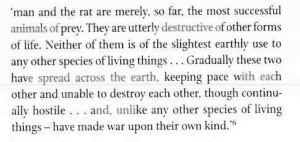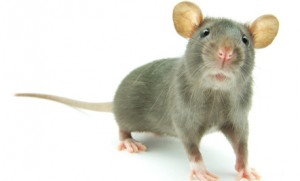The answers to the following questions might be scary. How much do we know about where our food comes from today? How do we determine if we will eat something?
Goat Song is the present-day first-person account by a man who moved from NYC with wife to herd goats in the Vermont countryside. Among many things, I began to understand what can be gained: having true understanding of life achieved by herding animals as informed by history. (Perhaps, there IS great significance in understanding historical evolutionary human – animal relationships.)
This post will hopefully make logical seance as salient points throughout the book’s four sections naturally including my own thoughts, questions for discussion, and material quoted that made an impression on me.
Speaking of Thoreau, “I admired how he wove literary culture and agriculture into one fabric – pen in one hand, hoe in the other-and how he understood that alongside civil disobedience, the most active thing one could do on earth was produce one’s own food.
The process of rediscovering animal husbandry begins with animal familiarity. Kessler’s writings present the case that keeping domestic animals begins with familiarly and hard work, which is the foundation for a deep understanding of animals and our latter awareness of the world. Using EO Wilson as a reference Kessler explains that to understand life, one must understand by following living beings and observing their life. How much is our human world understanding altered by seeing animal husbandry as keeping livestock on an industrial scale produced for identical product distribution in an effort to maximize economic gain? Is it possible for true wisdom and knowledge be achieved though other means than hard work?
Part of the rediscovery process is learning to identify signs in animals and although foreign at first, this skill has the capacity to quickly become second nature. Like detecting heat in does, for example, was learned though experience and collaboration with those who have done it before. “Mary Beth had a grace around animals that came from many years of goat wrangling.” I’m familiar with this characteristic of not being flustered as it reminds me of my grandma who lived her whole life on a farm. Once I saw her kill a hurt crow on the ground without hesitation with a golf club. It’s common sense that can only be gained by experiences in doing.
What influences (and/or should be the influences to) the sharing of animal husbandry information and resources? Consider the selling of Buck sperm for reproduction and the giving of a French cheese recipe. How are the factors of market competition, good will, private gain for providing information, subsistence of culture and tradition, among many rated to influence what and how information is shared between keepers of domestic goats and other animals? It seams to be that the subjective and earthly-connection quality to fresh milk (its essence purely an artistic expression for eating) encourages producers to more freely share information as it is a celebration of discovered joy to share with more people. It is not motivated by profit achievable. Can profit driven livestock food products be such that they spread joy?
“Or perhaps the mark of the artisan is that he or she gives away their craft, that culture is passed in this way, without trademarks or copyrights – but as a simple gift.”
There were many examples of goat behavior throughout the book which can be partially or fully attributed to one or more factors in genetics, individual behavior differences based on experience and our cultural evolution. What were some examples you found?
There is relevant discussion that should take place surrounding the perception of goats throughout cultures (the Greek god Pan, for example) and how those perceptions influence our behavior and attitudes today. Does viewing the “mating” of goats as “Kind of Romantic” or as a business deal make a difference?
The way animals behave inform our decisions of how we treat them. Should humans rid their herd of a stubborn goat? Put down an animal that is very sick? There might be much meaning to aid our decision making in the words, “You need humility…to live with goats-and you need a good sense of humor.” How could humility help us determine how we treat our animals and are their other frameworks the book presented that would be useful?
The behavior of goats interestingly offers evidence to environmental sustainability. Goats “waste” a lot of hay, 1/4 falls to the ground and is not eaten. However this hay serves as a thermal mass, effectively retaining heat to keep the barn interior warmer in the winter months. An understanding of natural application of environmental regulating techniques, like using hay to store heat or understanding the entire life-cycle impacts of something like recognizing manure as a part of the process, could aid society in their social acceptance in their inclusion in future development.
Do you agree or disagree with “The Question: How does a human and not the intended offspring obtain milk from a lactating animal?” and “The Answer: By Cohesion and Deceit” offered by Kessler? Is their substantial evidence to disagree?
The milk of domestic animals I found to be exceptionally interesting. Why is it not currently socially believable that commercial milk cows fed corn are sick animals and produce sick milk that is cooked to eliminate dirtiness. There are many properties of raw milk (amino acids, good bacteria, ect) that apparently make it much better than pasteurized. Even so, would you drink raw milk and how risky do you think it would be? Is producing your own raw milk different than buying it from a farmers market directly from the farmer or buying it from a market shelf who bought it from a farmer? Does the increased distance between the milked animal and the drinker of milk increases, perhaps, the distrust of milk?
It was surprising to read about the many bits that make up our daily life have roots in pastoralism. It created evidence to validate that domesticated animals are truly a part of who and why we are.
It was once the bull was used for trade that the inequality between in rich and poor began to grow across the planet. “Before money talked, it walked.” In short, the big picture is that “the mother of our culture is agriculture; all other arts sprang from it.” Is to forget this art of our food to lose part of our culture and possibly our happiness?
The making of cheese, when the author achieved a “clean break”, was described as “somewhat erotic.” Why was this (cheese making) so appealing? I think it has something to do with the amount of work, skill and dedication (that we have lost collective value for, culturally) that manifests the rare, raw, variable, trusting and art form that is cheese.
Even getting in hay for the winter, the hard work that it is, showed the strengthening of family bonds though their mutual work with real purpose.
I love these photos from a smart local business in the Blue Ridge Mountains.


Bailing hay must be done with proper processing to ensure the nutritional content for the animal, and importantly, for us. As Kessler explains his experience “I’d been a part of that time and place, in concert with season and earth, a participant in one on the oldest piscatorial events… A reminder that a leaf of grass is no less than the journey-work of the stars.” Would a common person, uneducated in the deep history of culture reach this same feeling or does a full understanding mean one must be educated to allow experiences to have such significance?
When Kessler traveled to France he described the cheese making process, “Everything on the farm had to be immaculate; inspections are rigorous for organic and unpasteurized dairies.” Can this, as opposed to farms who simply “cook the uncleanliness away,” be considered to produce food with more value, more freshness, and more nutrition? Do these factors make one food more “real” than another?
The biggest point of personal consideration is determining the value of good nutrition (in very real physical effects) and thus deciding from what kind of farm should I purchase from and support. The collective social answer to this question will determine the future of food to be created.
Socrates once said in a bold statement, “The unexamined life is not worth living.”










